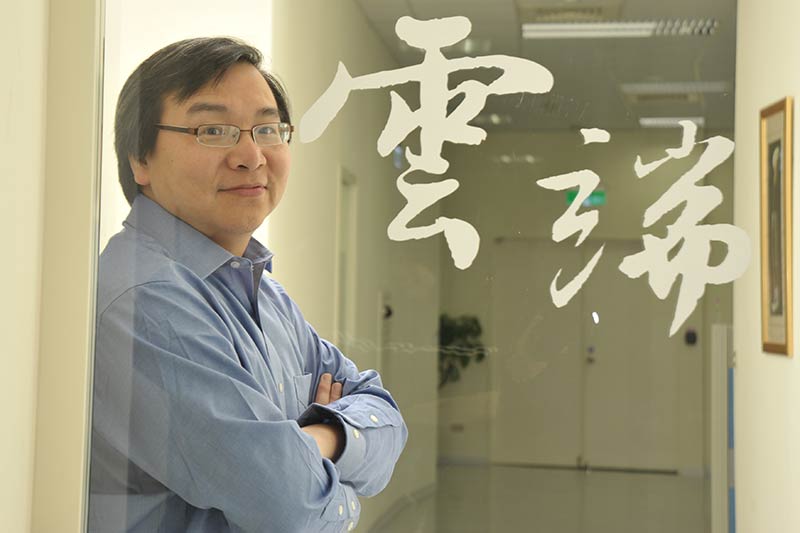
Last week OpenGov published a joint interview with Mr. Francis Liang Kuo-Hsin, Representative, Taipei Representative Office and Dr. Chiueh Tzi-Cker, Vice President & General Director, Industrial Technology Research Institute of Taiwan (ITRI), discussing the development of Taiwan’s digital economy.
Founded in 1973, ITRI is a nonprofit R&D organization engaging in applied research and technical services. ITRI has been dedicated to helping industries in Taiwan stay competitive and sustainable.
Subsequently, we received additional detailed responses from Dr. Chiueh to some of the questions. Here, we have collated his responses. He talks about the pressures of price competition and the need for manufacturers to move beyond the confines of just “Hardware” or “Software”, into the systematic software and hardware integration development. Dr. Chuieh highlights Taiwan’s strengths in human capital, established industrial chain and entrepreneurial culture, which could enable the industry to leverage trends in big data, 5G, IoT, AI and move to the next level.
Could you please provide an overview of the landscape of Taiwan’s ICT industry, including large corporates, SMEs and startups?
According to the latest official statistics report from the Ministry of Economic Affairs, R.O.C, the number of companies in Taiwan is 1,416,738 including 32,757 large corporations (2.31%) and 1,383,981 SMEs (97.69%). Taiwanese startups totaled 98,320. The numbers are as of end 2015. The report underscores the importance of ICT industry in Taiwan as its gross production amounted USD92,300 million, contributing 16.5% of the total GDP in Taiwan.
What are your views on the prospects for Taiwan’s ICT going forward? What are the priorities and challenges?
While industries in Taiwan continue to enjoy some success in the hardware business, Taiwan faces immense pressure particularly stiff price competition from Chinese and well-established global manufacturers. As technology moves to the third platform such as mobile, big data, and cloud computing among others, software and services industry shows great promise and value add. Taiwan’s ICT industry needs to transform itself from a low-cost, manufacturing efficiency industry to a high value, innovation-driven economy.
The development of cross-domain integration systems is becoming a global trend and hence, it is important for ICT manufacturers to move beyond the confines of just “Hardware” or “Software”, and venture into the systematic software and hardware integration development.
System software is software that combines with specific hardware, to which value-added upgrades may be performed for years to come. The most valuable aspect of system software is its control management function, for example: Industry 4.0 control software, vehicle control software, and automated driving management software.
The ICT manufacturers in Taiwan must embrace software to provide high quality software-hardware integrated systems and perfect solutions that are required to upgrade themselves from being hardware OEMs (Original Equipment Manufacturers) to system suppliers.
We anticipate it will be necessary to exert considerable efforts to improve our software capability and hardware value in order to elevate Taiwan’s ICT industry to the next level.
Besides, Taiwan has many advantages that other countries lack, such as high-quality human resources, a pragmatic and reliable culture among engineers, a well-developed industrial chain, highly flexible small and medium-sized enterprises, and a famous spirit of entrepreneurship. By capitalising on our competitive edge, Taiwan’s industries will be able to enjoy a prosperous and long-lasting future.
Are there any specific areas in technology that are expected to drive growth? Can you share some developments in emerging technologies such as AI, data analytics, and IoT etc.?
Emerging technologies in areas such as artificial intelligence, robotics, IoT, are expected to drive growth in today’s Industry 4.0 era. For instance, automated guided vehicles (AGVs) and autonomous drones will help increase productivity and reduce manpower reliance for industries across logistics, manufacturing, and retail.
The ITRI has introduced several exciting, state-of-the-art technologies including an intelligent vision system for companion robots, and a remotely operated autonomous drone. In addition, ITRI has also just released a smart pesticide detector featuring micro optical inspection, which was awarded the COMPUTEX 2017 Best Choice Award.
In Taiwan and in Asia, ITRI is promoting the NSOS or next-generation system software for smartphone technology. NSOS is designed to increase the added value of commodity Android phones. Some features of this project include: solving the BYOD security problem via smartphone virtualisation; providing more personalised services via accurate inference of dynamic user interests; and offering more streamlined smartphone usage experiences via programmatic app control by leveraging on the capabilities of existing apps.
Specifically, the smartphone virtualisation technology enables a physical smartphone to be used as multiple virtual smartphones, e.g., one for office use (more secure and less secure), another for personal use (more flexible but less secure), and the third for app trial (risky but free). This way, a smartphone user only needs to carry one physical device, and then uses it in different ways in different contexts, without interfering one another.
Are there specific technology areas that are expected to drive growth? Can you share some developments in emerging technologies such as AI, data analytics and IOT?
Global trends in big data, 5G, IoT, AI drive the transition of ICT industry, whereas big data drives data center and server industry in Taiwan. Taiwan government has launched the Asia.Silicon Valley project aiming to transform Taiwan into an R&D hub for IoT as well as the integration of software and hardware to create a global center of entrepreneurship.
Device makers move down to the value chain to offer platform and services. Small, low power consumption, sensor and identification are needed for integrated circuit (IC). Advanced communication technology drives demand for small cell. AI drives the rise of accelerated computing in data centers. Decades of success in Taiwan’s ICT hardware industry will bring opportunities to prospective growth from the new global ICT trend fueled by the trend-driven innovation.
While Taiwan’s advantage lies in its information technology, Taiwanese companies have developed UAVs or Unmanned Aerial Vehicles manufacturing ecosystem; this shows Taiwanese companies could be suppliers of both hardware and software solutions.
For the suppliers of autonomous vehicles, there are major sensor systems including camera modules, millimeter wave[1] radars and LiDAR[2] for existing advanced driver assistance systems (ADAS) development. ADAS helps boost Taiwan millimeter wave sensors and camera modules makers. Taiwan ICT industry gains momentum with growing connected car technology investment. The government’s Digital Nation and Innovative Economic Development Plan (DIGI+) (2017-2025) has included Unmanned Vehicle as one of the advanced research technologies, and there will be a significant funding support to advance the emerging technologies in Taiwan.
AI has been recognised within the tech sector as the next big thing after smartphones, and it presents an excellent opportunity for an upgrade of Taiwan’s high-tech industry. The emerging technologies, AI and machine learning, which include technologies such as deep learning, neural networks and natural-language processing, can also encompass more advanced systems that understand, learn, predict, adapt and potentially operate autonomously. AI and machine learning will also increase the need for big data analytics. Its influence on industries and businesses will have direct impact on products and services and the upgrading of industries through the use of AI in production, management or commercial processes.
Taiwanese businesses face a more urgent task to convert their key processes and management know-how into an AI system to maintain their competitiveness. To actively support Taiwan’s position as digital innovation, Board of Science and Technology (BOST), the Executive Yuan is planning to include AI strategy in Strategic Review Board Meetings for Taiwan’s Intelligent System and IC Industry. Although Taiwan may not be able to match what giant companies are doing, there is a niche direction that Taiwan can go from master technologies and applications in specific industrial fields, which in turn provides plenty of opportunities out there for Taiwanese industries.
[2] LiDAR or Light Detection and Ranging measures distance to a target by illuminating that target with a pulsed laser light, and measuring the reflected pulses with a sensor. Differences in laser return times and wavelengths can then be used to make digital 3D-representations of the target. Originally used in airborne and ground surveying to make high-resolution maps, the technology is being used for control and navigation for some autonomous cars.
















